KN2M
December 12, 1998
Tower Busters make a late season stop at KN2M and replace a KLM 10-30 Log Periodic with a Bencher Skyhawk. Temperature 38 F and winds gusting to 25 mph. Photography by K2DSO, Joe.
Thanks to W2UB, WB2WPM, KB2ZZJ and K2DSO.
The
Western New York DX Association is proud to have the Tower Busters as members.On air test results are also available
here.If you have questions, be sure to contact me at :
rodman@acsu.buffalo.edu
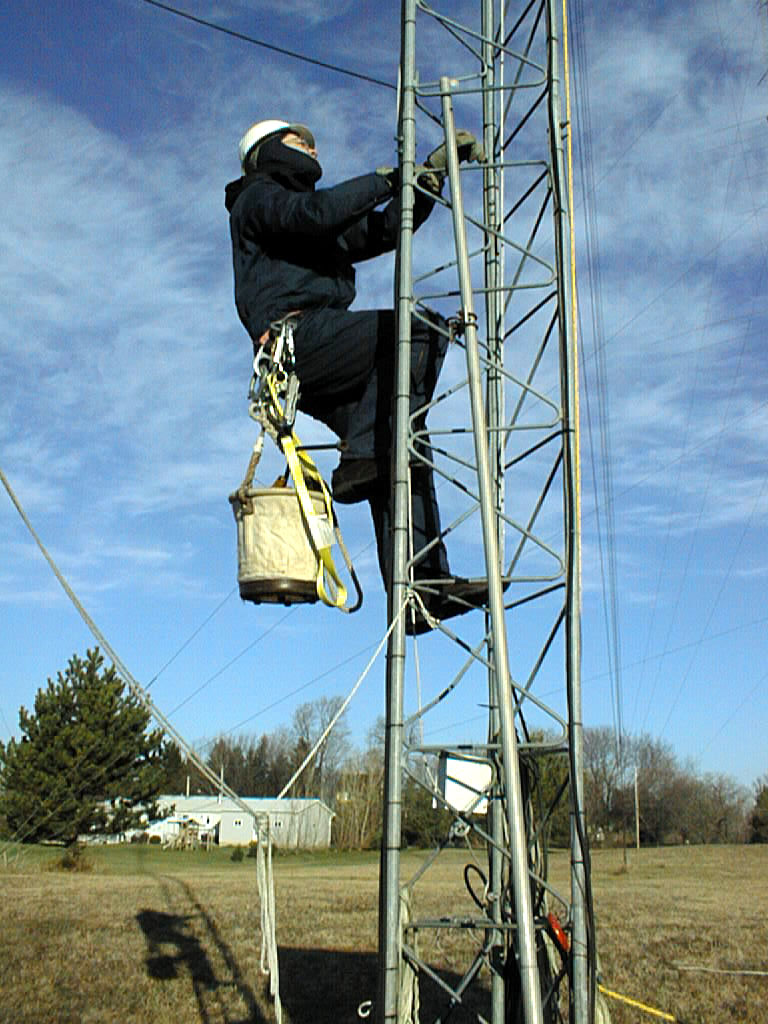
Starting the climb. Ground crew getting ready. Tower is already rigged to 115 '. The antenna is at 90'. The tram cable is attached to the tower with a large shackle at the 115' guy ring. The pulleys come apart to allow easy attachment of rope. A cotter pin is used for safety, instead of the ring pin that comes with the pulley. The upper pulley is attached with a locking carabiner. A second pulley at the base of the tower transfers the load to horizontal. All interfering wire antennas have also been removed from the work area. The anchor for the tram cable is a large tractor. It is positioned so the antennas will clear the nearby guy anchor of the adjacent tower.
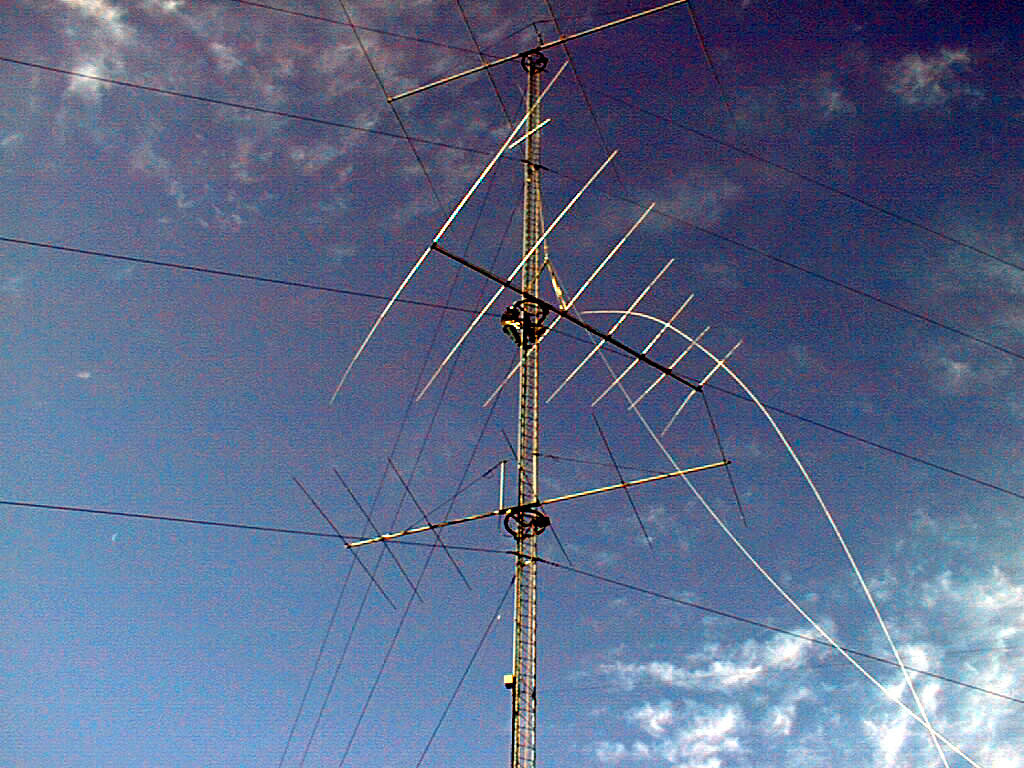
The log is free. It is attached to the 1/4" wire rope with a pulley, locking carabiner, and nylon slings. There is a tag line which is bowing upward in the picture. After the bolts are removed, the antenna is raised up the tower 3-4' with the small tractor. Then the tram cable is tightened, pulling the antenna outwards.
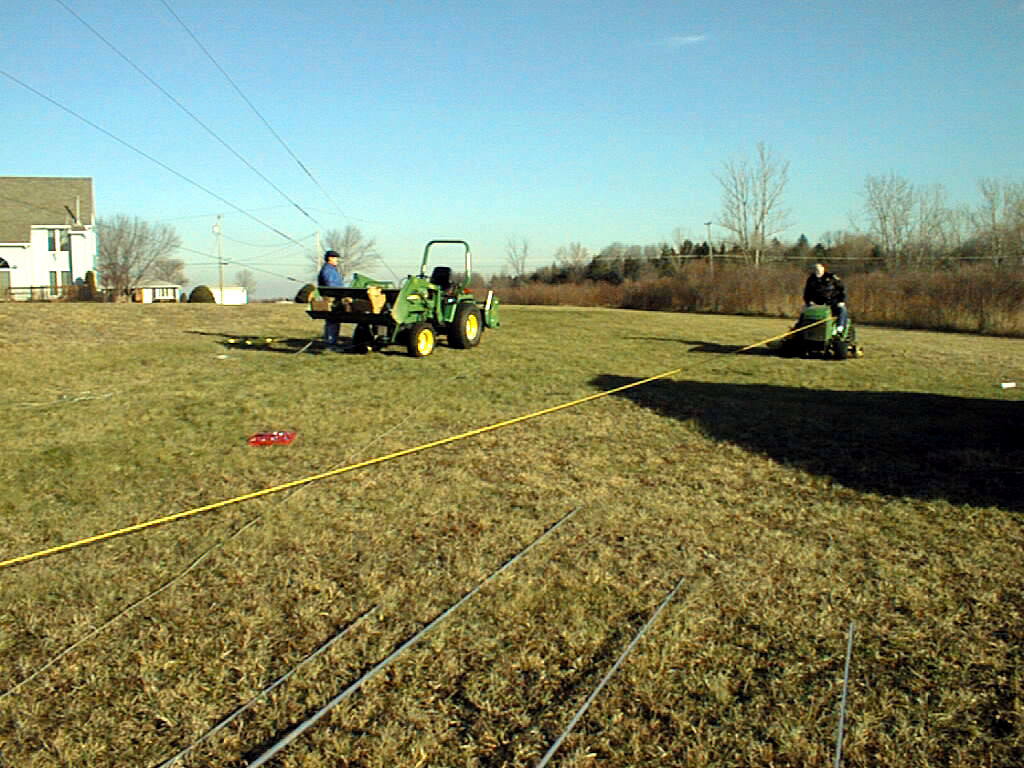
An electric winch on the big tractor gives quick and accurate changes in rope tension. The small tractor is attached to the 1/2" polypropylene lift rope. The length of the rope needed to lower the antenna was premeasured, to prevent running short at the last critical moment as the antenna reaches the ground crew.
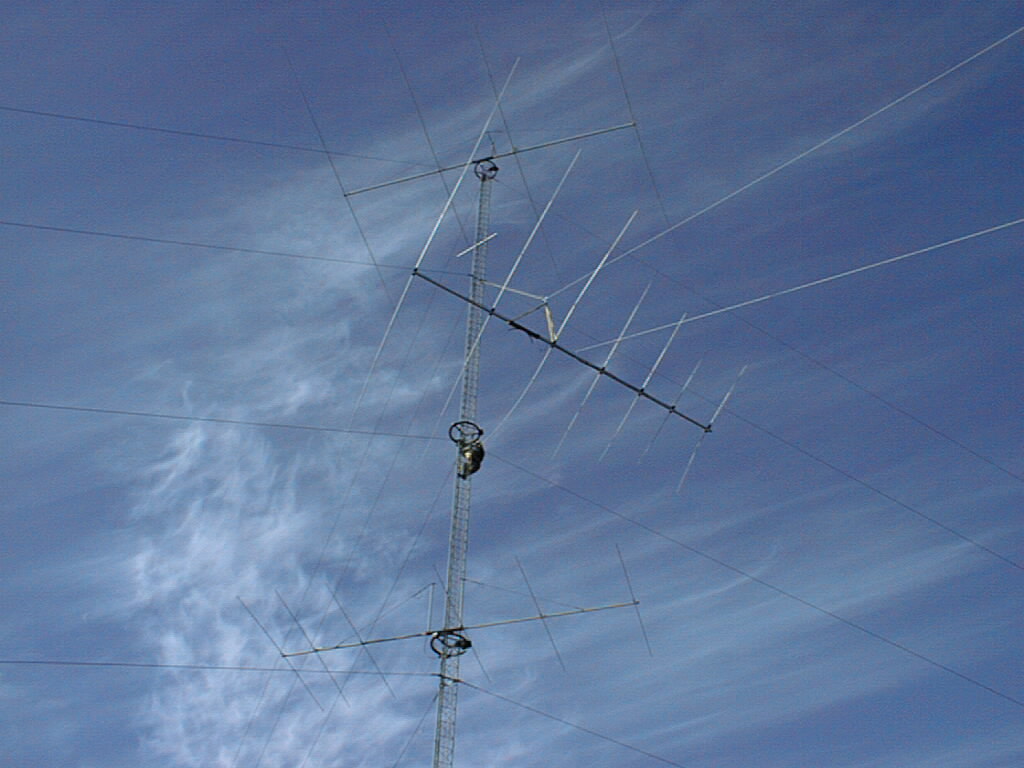
Down it comes. Easy does it. The winds are very strong. The tram is in line with the set of guys across the tower. This eliminates the need to back-stay the rigging.
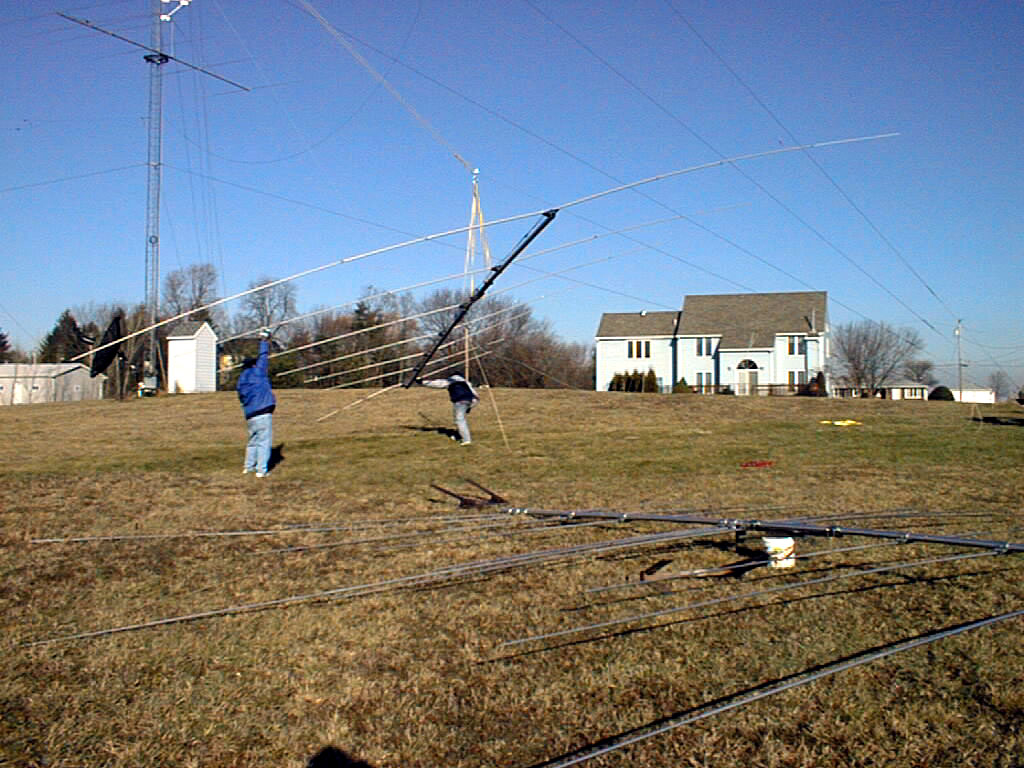
Almost there! In the background is the second 140' Rohn 45 tower with 5/5 for 20 meters and 6/6 for 15 meters. A small insulated building at the base of the tower holds all the switching gear for the rotors, a 440 repeater and PacketCluster user and backbone links. The Bencher Skyhawk is seen in the foreground.
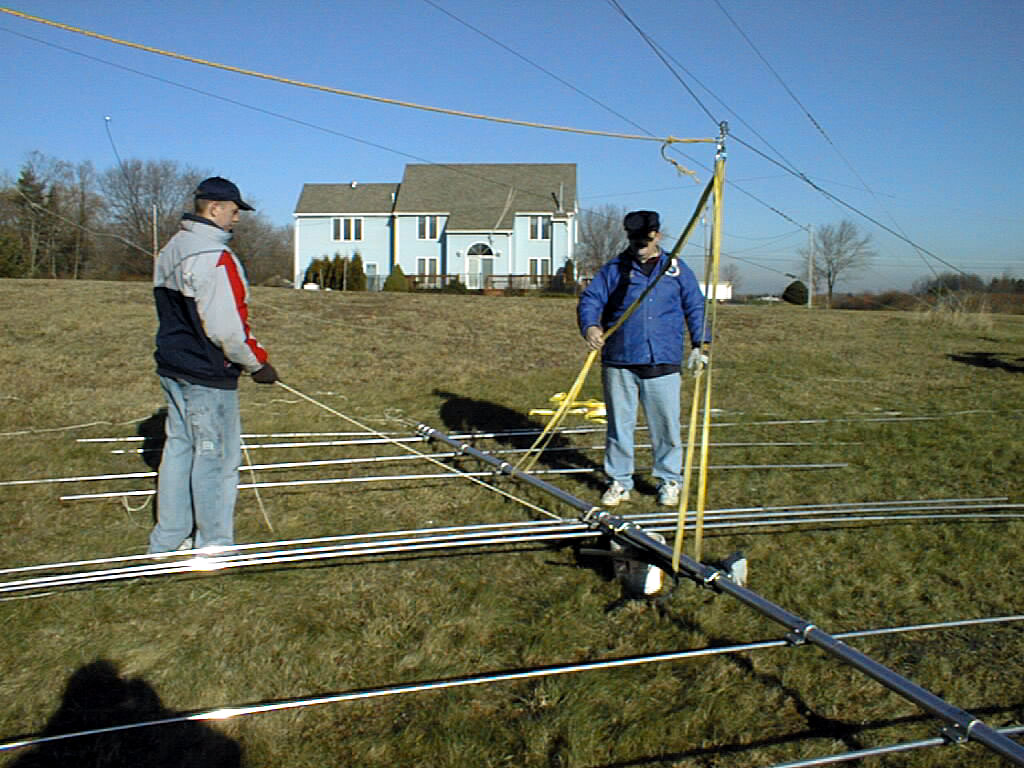
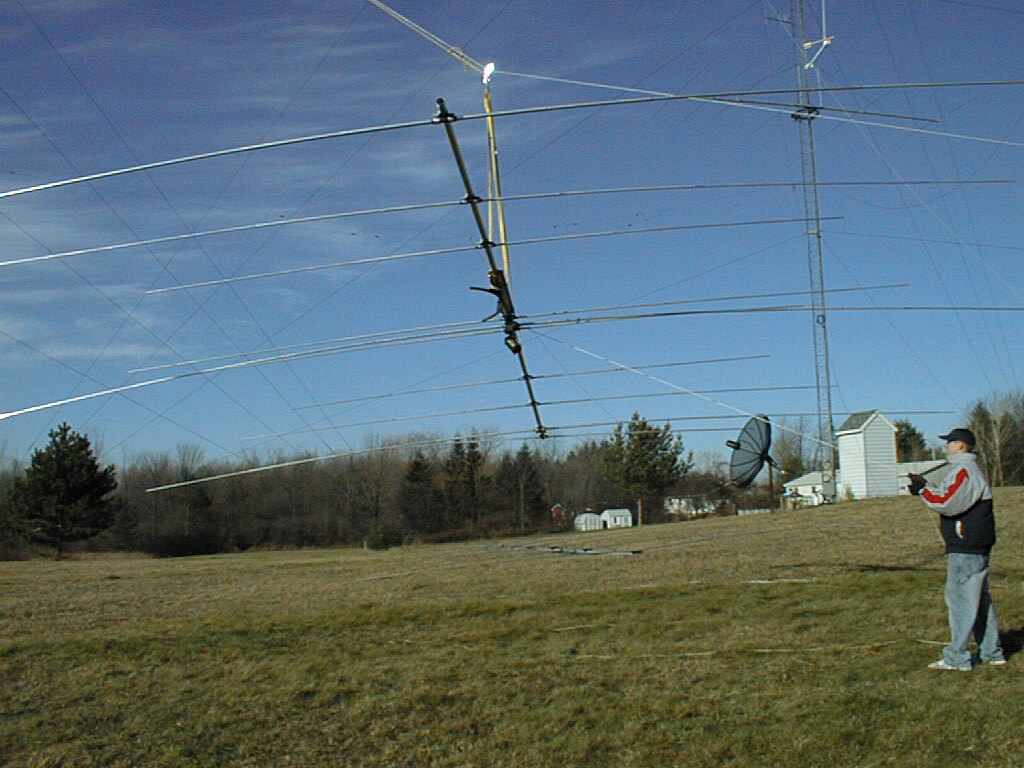
Up it goes. The tag line is critical now. It is used to steer the antenna elements free of the tram line and keep the antenna stable in the wind. If the tram line catches the elements, it will possibly become vertical and unstable as it goes upwards. The tag line is 3/8" nylon and is wrapped around the elements and boom tip so it will not foul when removed and dropped to the ground.
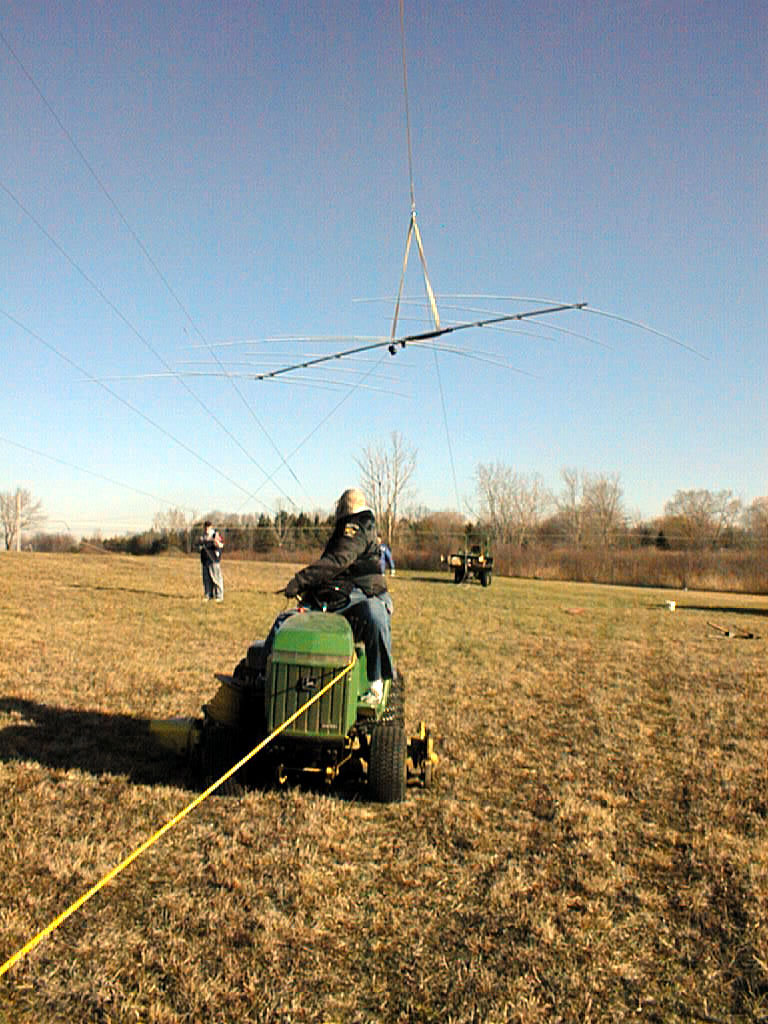
The tractor is backed carefully so as not to interfere with the ground crew. One man is in constant touch with the climber by radio to give instructions.
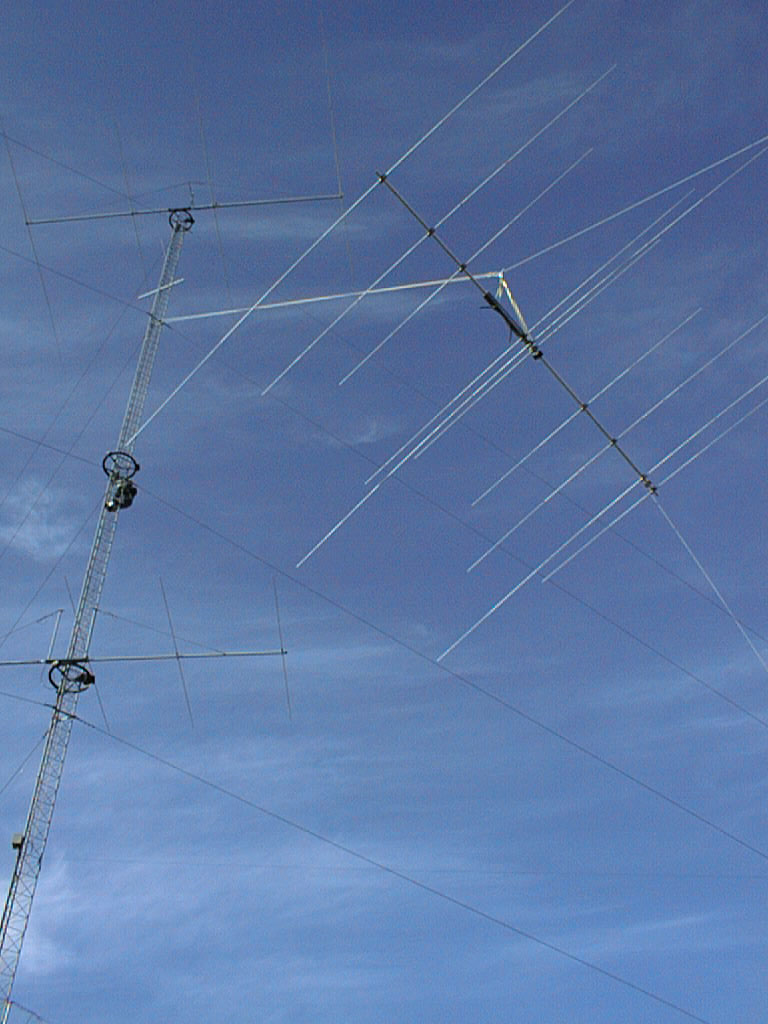
Come to papa! The antenna at the 140' top is a custom 40M-4 by M-Squared. It was created with collaboration of Dave Leeson and Mike Stall. The winds here are especially brutal. The previous full size 40 was destroyed only months after construction. This antenna is now 6 years old. From the top of the tower, Lake Erie, Niagara Falls and Toronto are visible.
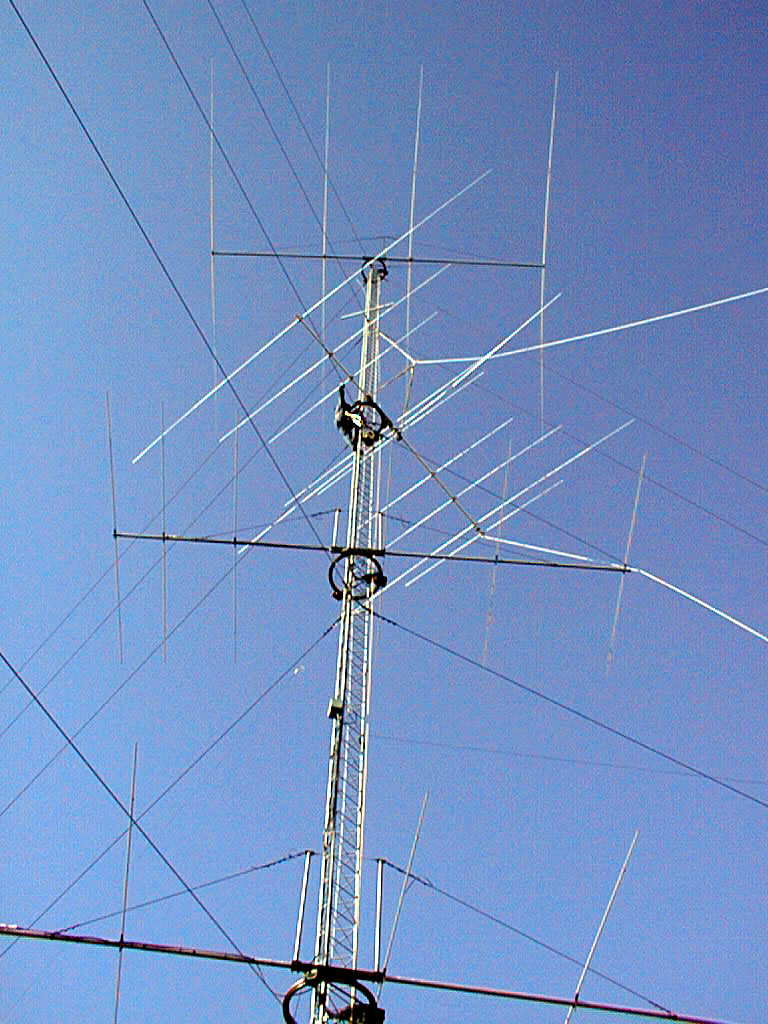
Once the antenna clears the guys, the winch is let out, allowing the antenna to move closer to the tower. Then the antenna is lowered onto the ring. Windy conditions or an unbalanced load can make it difficult to get the bolts attached without a second climber. It is important to have the antenna load as balanced as possible by the ground crew. This can save considerable time and frustration.
Later, the rigging is taken off the tower. The tram line was used to lower the tools and the rope is used to lower the wire cable. A job well done, thanks to the Tower Busters: Shane, Tommy and Fred!
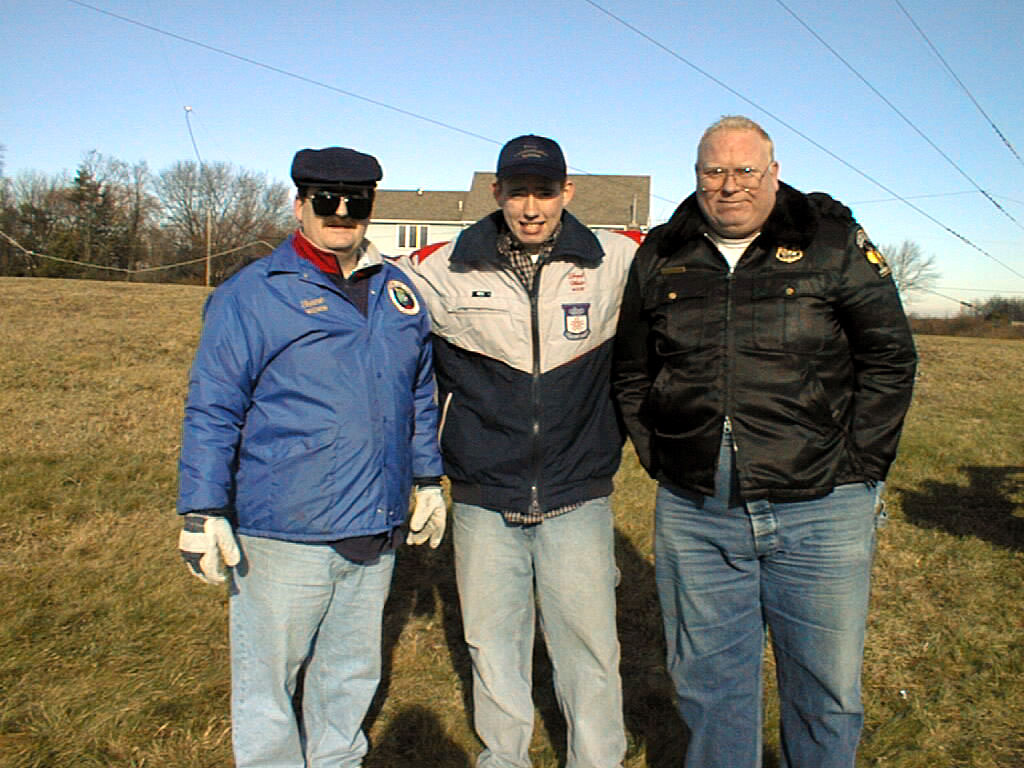
Tower Busters-1998
WB2WPM, KB2ZZJ, W2UB
"Hire the professional, not the handicapped"